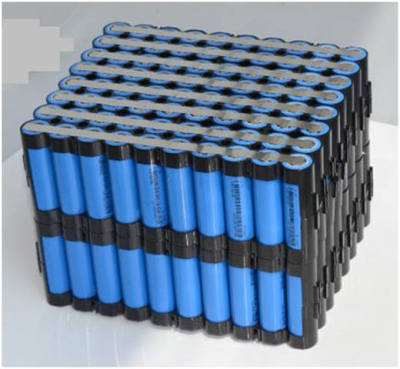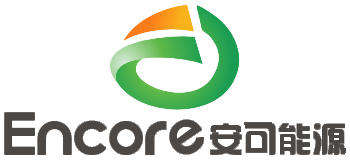- English
- Español
- Português
- русский
- Français
- 日本語
- Deutsch
- tiếng Việt
- Italiano
- Nederlands
- ภาษาไทย
- Polski
- 한국어
- Svenska
- magyar
- Malay
- বাংলা ভাষার
- Dansk
- Suomi
- हिन्दी
- Pilipino
- Türkçe
- Gaeilge
- العربية
- Indonesia
- Norsk
- تمل
- český
- ελληνικά
- український
- Javanese
- فارسی
- தமிழ்
- తెలుగు
- नेपाली
- Burmese
- български
- ລາວ
- Latine
- Қазақша
- Euskal
- Azərbaycan
- Slovenský jazyk
- Македонски
- Lietuvos
- Eesti Keel
- Română
- Slovenski
- मराठी
- Srpski језик
What is the energy storage system of lithium iron phosphate batteries?
2022-11-07
Lithium iron phosphate batteries have a variety of unique advantages such as high working voltage, high energy density, long circulation life, and environmental protection. They support unspeed extensions. After configured the energy storage system, large -scale power storage can be performed. Lithium iron phosphate battery energy storage system consists of lithium iron phosphate battery pack, battery management system (BMS), converter device (rectifier, inverter), monitoring system, transformer, etc.

During the charging phase, intermittent power supply or power grid is charged for energy storage systems, and AC charges the energy storage battery module through the rectifier DC to store energy. During the discharge phase, the energy storage system is discharged by the grid or load, and the DC of the energy storage battery module is converted from a inverter to AC. By monitoring the system control the reverse deformation output, it can provide a stable power output for the power grid or load.
What is the ladder of lithium iron phosphate batteries?
Generally speaking, there are still nearly 80%of the capacity of electric vehicle retired iron phosphate batteries, and the lower limit of 60%of the complete scrap capacity still has a capacity of 20%. It can be used for low -speed electric vehicles and communication base stations. Essence Realize the phased use of waste batteries. Lithium iron phosphate batteries retired from the car still have high utilization value. The phase of the power battery is as follows: Enterprises recycle waste batteries, disassemble, test levels, and re -configure the battery module according to capacity. At the level of battery preparation, the remaining energy density of lithium iron phosphate batteries is 60 ~ 90Wh/kg, and the cycle life is 400 to 1,000 times. As the battery preparation level increases, the cycle life may be further increased. Compared with energy 45Wh/Kg and a cycle life of about 500 lead -acid batteries, the cost of iron phosphate and lithium waste phosphate is low, only 4000 ~ 10,000 yuan/t, and high economy.
What are the characteristics of lithium iron phosphate battery recycling?
1. Fast growth, large scrap volume
Since the development of the electric vehicle industry, China has been a global consumer market for lithium iron phosphate. Especially in 2012-2013, it increased by about 200%. In 2013, the sales of lithium iron phosphate in China was about 5797 tons, accounting for more than 50%of global sales.
In 2014, 75%of lithium iron phosphate was sold to China. The theoretical life of lithium iron phosphate batteries was 7-8 years (7 years). It is expected that about 9400T Iron phosphate will be scrapped by 2021. If the amount is not dealt with, it will not only cause environmental pollution, but also cause energy waste and economic losses.
2. Significant loss
LIPF6, organic carbonate, copper and other chemicals contained in lithium iron phosphate batteries are in the national hazardous waste list. Lipf6 has a strong corrosiveness, and it is easy to decompose to generate HF in the case of water. Organic solvents and their decomposition and hydrolyzes can cause severe pollution to the atmosphere, water and soil, and cause harm to the ecosystem. Heavy metals such as copper are accumulated in the environment and harm to humanity through the biological chain. Once the phosphorus enters the lake and other waters, it is easy to cause the rich nutritionalization of the water body. It can be seen that non -recovery of abandoned iron phosphate batteries will cause great harm to environment and human health.

During the charging phase, intermittent power supply or power grid is charged for energy storage systems, and AC charges the energy storage battery module through the rectifier DC to store energy. During the discharge phase, the energy storage system is discharged by the grid or load, and the DC of the energy storage battery module is converted from a inverter to AC. By monitoring the system control the reverse deformation output, it can provide a stable power output for the power grid or load.
What is the ladder of lithium iron phosphate batteries?
Generally speaking, there are still nearly 80%of the capacity of electric vehicle retired iron phosphate batteries, and the lower limit of 60%of the complete scrap capacity still has a capacity of 20%. It can be used for low -speed electric vehicles and communication base stations. Essence Realize the phased use of waste batteries. Lithium iron phosphate batteries retired from the car still have high utilization value. The phase of the power battery is as follows: Enterprises recycle waste batteries, disassemble, test levels, and re -configure the battery module according to capacity. At the level of battery preparation, the remaining energy density of lithium iron phosphate batteries is 60 ~ 90Wh/kg, and the cycle life is 400 to 1,000 times. As the battery preparation level increases, the cycle life may be further increased. Compared with energy 45Wh/Kg and a cycle life of about 500 lead -acid batteries, the cost of iron phosphate and lithium waste phosphate is low, only 4000 ~ 10,000 yuan/t, and high economy.
What are the characteristics of lithium iron phosphate battery recycling?
1. Fast growth, large scrap volume
Since the development of the electric vehicle industry, China has been a global consumer market for lithium iron phosphate. Especially in 2012-2013, it increased by about 200%. In 2013, the sales of lithium iron phosphate in China was about 5797 tons, accounting for more than 50%of global sales.
In 2014, 75%of lithium iron phosphate was sold to China. The theoretical life of lithium iron phosphate batteries was 7-8 years (7 years). It is expected that about 9400T Iron phosphate will be scrapped by 2021. If the amount is not dealt with, it will not only cause environmental pollution, but also cause energy waste and economic losses.
2. Significant loss
LIPF6, organic carbonate, copper and other chemicals contained in lithium iron phosphate batteries are in the national hazardous waste list. Lipf6 has a strong corrosiveness, and it is easy to decompose to generate HF in the case of water. Organic solvents and their decomposition and hydrolyzes can cause severe pollution to the atmosphere, water and soil, and cause harm to the ecosystem. Heavy metals such as copper are accumulated in the environment and harm to humanity through the biological chain. Once the phosphorus enters the lake and other waters, it is easy to cause the rich nutritionalization of the water body. It can be seen that non -recovery of abandoned iron phosphate batteries will cause great harm to environment and human health.



